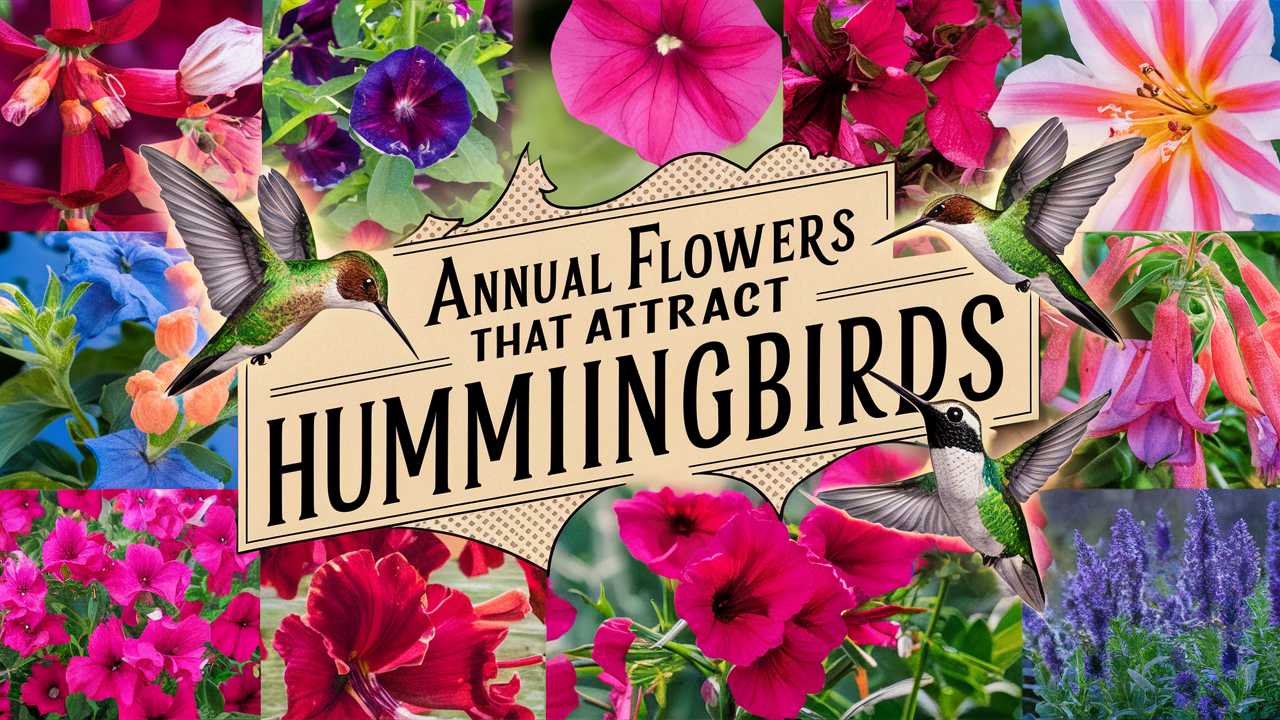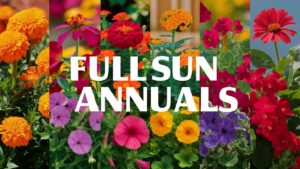Below, we will explore a variety of annuals that are particularly appealing to hummingbirds, sharing insights about each plant’s characteristics and how they can enhance your garden.
Cuphea
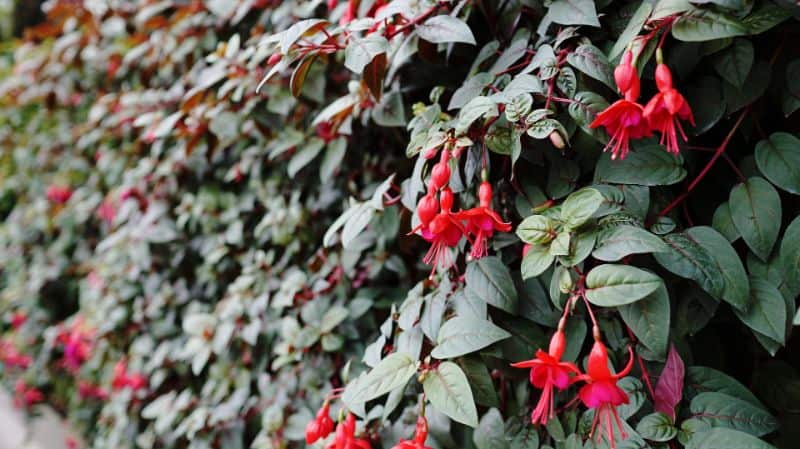
Cuphea, also known as the cigar plant, is a fantastic choice for attracting hummingbirds. With its unique tubular flowers, this plant produces blooms in vibrant hues like red, purple, and orange. The shape of the flowers is perfectly designed for hummingbirds, allowing them access to the nectar while they hover nearby.
Cuphea thrives in full sun and well-drained soil, making it an ideal addition to any sunny garden bed. This annual often blooms throughout the summer, ensuring a consistent food source for our feathered friends during the peak of the season. Additionally, cuphea requires minimal maintenance, as it is resistant to pests and diseases, making it a perfect choice for novice gardeners.
Calibrachoa
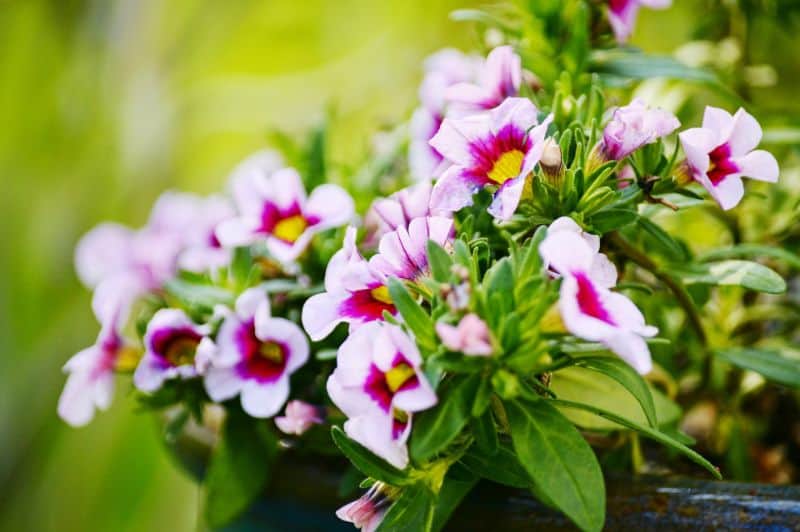
Calibrachoa, often referred to as million bells, is another hummer-friendly plant that shouldn’t be overlooked. These charming, bell-shaped flowers come in a multitude of colors, from bright oranges and yellows to soft pastels. They are particularly well-suited for containers and hanging baskets, which can be strategically placed on patios or near windows to enjoy their beautiful blooms up close.
These resilient annuals thrive in sunny locations and prefer well-drained soils that retain some moisture. When cared for properly, calibrachoa can produce blooms all summer long, providing a continuous source of nectar. Their trailing nature allows them to cascade beautifully, making them a stunning visual addition to your garden while simultaneously serving as a feast for hummingbirds.
Cleome
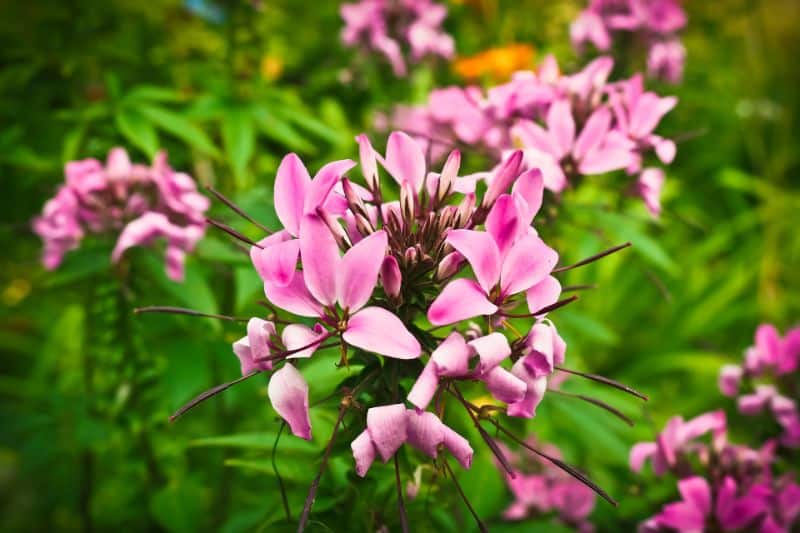
Cleome, often known as spider flower, offers a unique look that not only attracts hummingbirds but also adds an exotic flair to the garden. With spiky blooms that resemble fireworks, cleome stands tall and proud, often reaching heights of three to four feet. The flowers grow in clusters and are typically available in shades of pink, purple, and white, drawing in not just hummingbirds, but also butterflies and bees.
These flowers thrive in full sun and are known for their drought tolerance, making them a low-maintenance option ideal for busy gardeners. Cleome also has an ability to self-seed, meaning that once planted, they can return year after year with minimal effort. This resilience, combined with their striking appearance and attracting nature, makes cleome a must-have for any hummingbird garden.
Cypress Vine
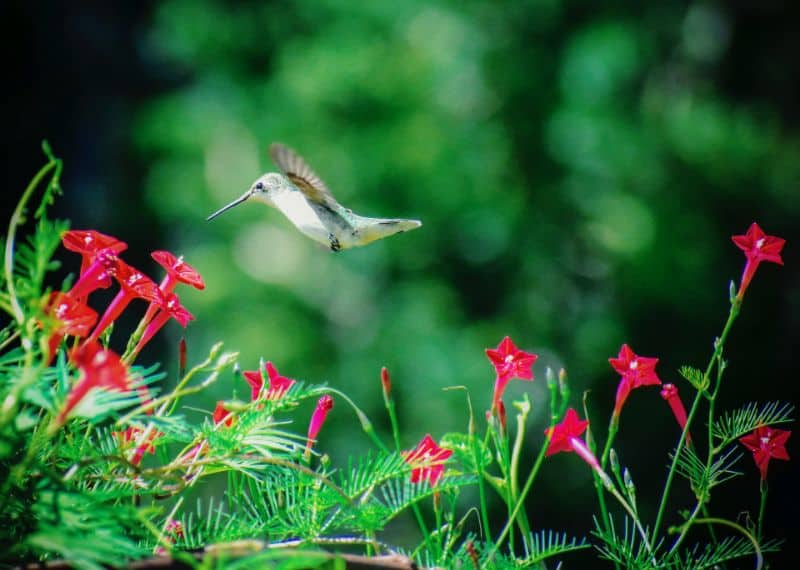
Cypress vine (Ipomoea quamoclit) is a beautiful and vigorous twining vine known for its delicate, feathery leaves and bright, star-shaped flowers. The flowers emerge in hues of red or pink, creating a vibrant backdrop that beckons hummingbirds from near and far. They can rapidly cover trellises, fences, or arbors, making them an excellent choice for vertical gardens.
In addition to attracting hummingbirds, cypress vine is also known to attract butterflies, enhancing the biodiversity of your garden. These vines prefer sunny locations with well-drained soil. Once established, they are quite hardy and require minimal maintenance, making them a perfect addition for gardeners looking to maximize space while providing a nectar-rich environment for hummingbirds.
Flowering Tobacco
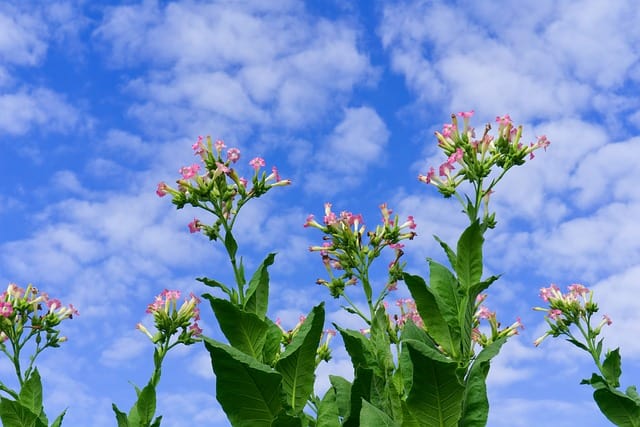
Flowering tobacco is a lesser-known but extraordinary annual that is immensely attractive to hummingbirds. With its tubular flowers that can range from white to pink, yellow, or even purple, this plant offers a captivating display throughout the growing season. The sweet fragrance of its blooms adds an aromatic element to your garden, making it a sensory delight.
Flowering tobacco grows best in full sun to partial shade and thrives in moderately fertile, well-drained soils. Hummingbirds are especially drawn to the nectar-rich flowers, ensuring they receive ample food throughout the day. Another intriguing aspect of flowering tobacco is its ability to bloom into the cooler months, extending the feeding season for hummingbirds well into late autumn.
Four-o’clocks
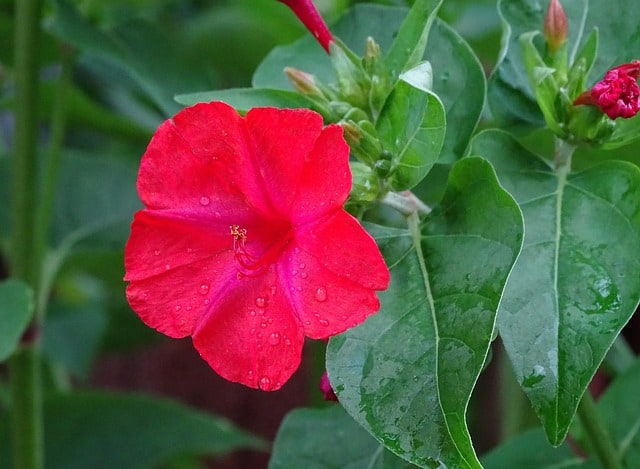
True to their name, four-o’clocks bloom in the late afternoon, showcasing vibrant colors that include pink, yellow, and purple. These flowers open in the late afternoon and can remain open through the evening, offering late-day feeding opportunities for hummingbirds. Their funnel-shaped flowers are attractively designed to provide easy access to nectar.
Four-o’clocks prefer well-drained soil and a sunny location to thrive. They have a somewhat expansive growth habit, providing a bushy environment perfect for attracting various insects, including those that serve as additional food sources for hummingbirds. Furthermore, the striking evening display of four-o’clocks makes them a beautiful and practical option for garden enthusiasts who want to extend their garden’s appeal into the dusk.
Fuchsia
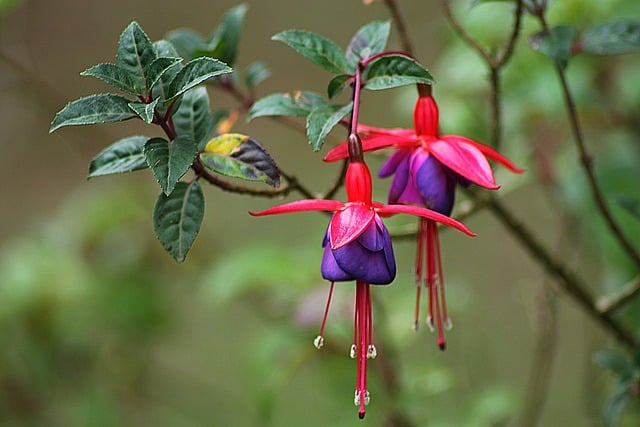
Fuchsia is another crowd-pleaser in the world of hummingbirds. The teardrop-shaped flowers, often dripping with shades of pink, purple, or red, are undeniably eye-catching. Fuchsia plants can be grown in containers, hanging baskets, or garden beds, making them versatile enough to fit any gardening style.
These annuals thrive best in partial shade and appreciate consistent moisture with well-drained soils. Their extended blooming season means that hummingbirds can rely on fuchsia flowers as a steady source of nectar. Fuchsia is not only stunning but also beneficial for wildlife, as they attract bees and butterflies, fostering a rich ecosystem in your garden.
Geraniums
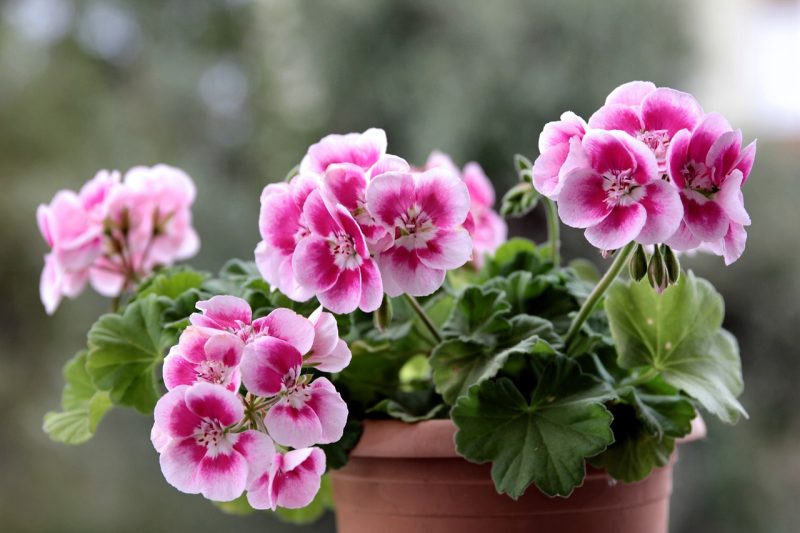
Geraniums are a beloved classic in many gardens and can be an excellent addition if you want to attract hummingbirds. While they are not always the primary nectar source for these birds, the brightly colored blooms can still entice them, particularly the varieties with tubular shapes.
These hardy plants are available in numerous colors, adding splashes of vibrancy to your outdoor space. They thrive in well-drained soil and full sun, making them relatively easy to maintain. Geraniums tend to bloom from spring until the first frost, providing ample time for hummingbirds to visit. Their foliage can also offer shelter and nesting opportunities for a variety of small garden animals.
Impatiens
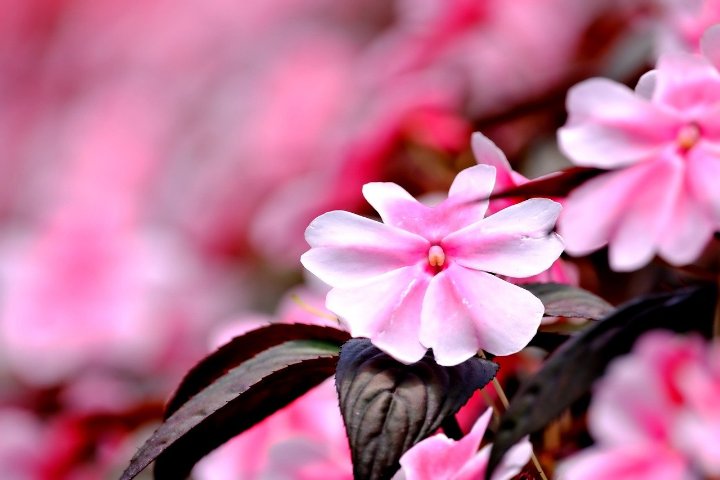
Impatiens are beloved for their lush, colorful blooms, and they also serve an important purpose in attracting hummingbirds to the garden. These shade-loving annuals produce a range of colors, making them ideal for partially shaded areas of your yard where other flowers may struggle to grow.
While impatiens are not traditional hummingbird magnets as some tubular flowers are, the bright colors and abundant blooms can help draw these birds in, especially in areas where other nectar sources may be limited. When planted en masse, impatiens create a stunning visual impact and can effectively enliven shady corners of your garden, while still acting as a helpful bridge to attract hummingbirds.
Indian Paintbrush
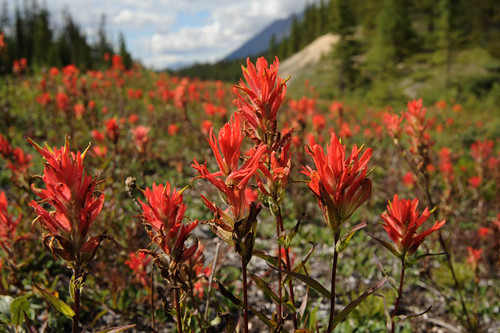
Indian paintbrush is a striking annual that allows you to add localized wildflower flair to your garden. Known for its unique, brush-like flower heads that come in various colors, including red and orange, Indian paintbrush provides a vivid visual that is hard to ignore. Hummingbirds are drawn to its colorful blooms, which bloom from early spring through summer.
This plant prefers nutrient-rich, well-drained soil and enjoys full sun. Additionally, Indian paintbrush is often found in wildflower meadows, making it an excellent choice for gardeners looking to create a more naturalistic setting. By incorporating this native favorite into your garden, you’ll not only attract hummingbirds but also contribute to the local ecosystem.
Lantana
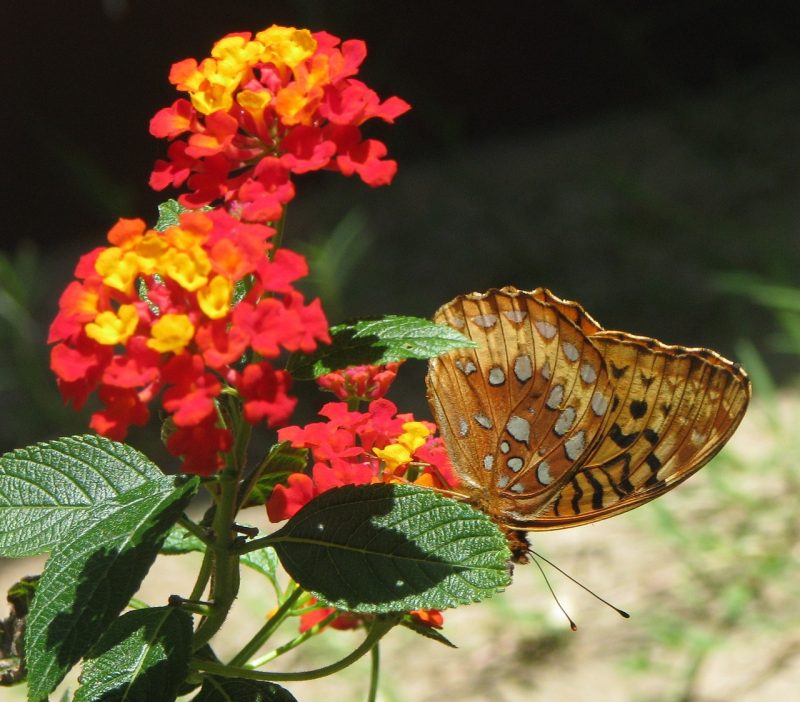
Lantana is a delightful perennial that behaves as an annual in cooler climates. Known for its clusters of tiny flowers that come in an array of vibrant colors, lantana is a favorite among hummingbirds. Its small, tubular blooms take the shape of an ideal feeding station, ensuring that these birds are drawn to your garden.
Lantana thrives in warm, full-sun locations and prefers well-drained soil. This plant is drought-tolerant once established, making it a low-maintenance option for busy gardeners. Additionally, lantana attracts various pollinators, including butterflies, creating a lively and beautiful garden environment.
Mexican Sunflower
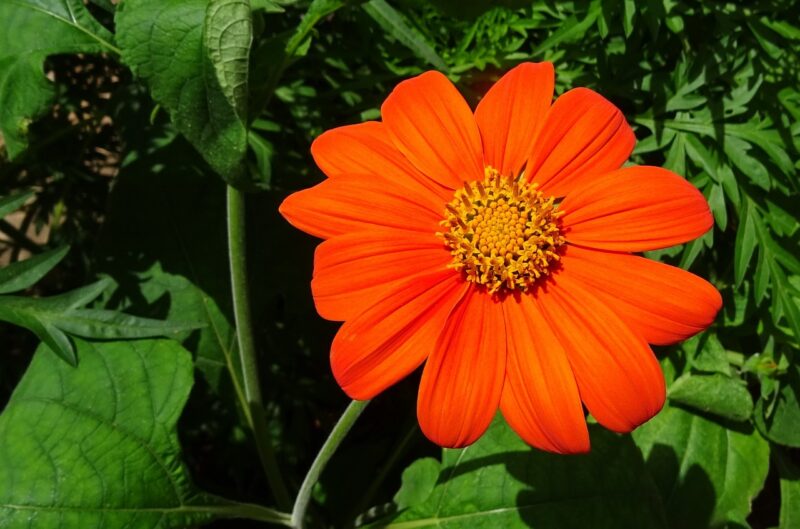
The Mexican sunflower or Tithonia diversifolia is a bold annual that can reach impressive heights and produce large, vibrant orange or yellow flowers. These blooms not only brighten your garden but also provide a significant food source for hummingbirds and butterflies.
Mexican sunflowers are easy to grow and thrive in full sun, requiring little more than well-drained soil and regular sun exposure. They bloom profusely from summer until frost, offering a continued sustenance source for hummingbirds. These flowers also have the added benefit of attracting multiple beneficial insects, enhancing the biodiversity of your garden.
Morning-glory
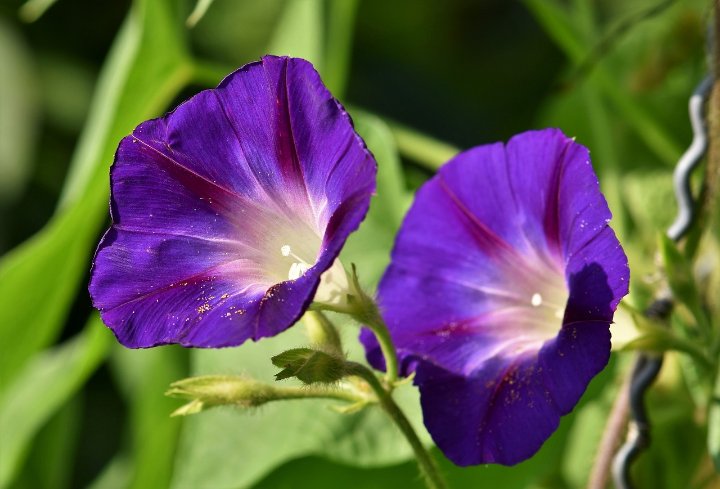
Morning-glories are a lovely option for attracting hummingbirds, with their large, trumpet-shaped flowers that open each morning. Available in multiple shades, including blue, purple, and pink, the blooms create a stunning display that is hard to resist for both gardeners and hummingbirds.
These annual vines are fast-growing and can easily cover trellises and fences. They prefer full sun and are adaptable to various soil types, making them simple to grow. With their rapid growth and beautiful blooms, morning-glories create not only an attractive garden focal point but also a reliable source of nectar for your feathered friends.
Nasturtium
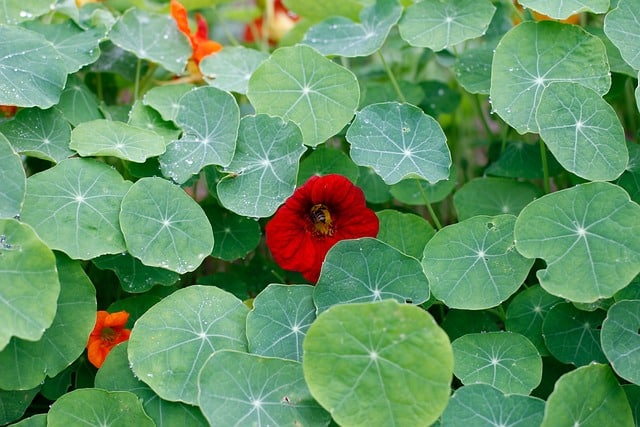
Nasturtiums are a unique choice for attracting hummingbirds while also adding lush, vibrant foliage to your garden. With bright flowers in shades of orange, yellow, and red, these flowers are striking and can grow both upright and trailing. The leaves are as attractive as the blooms, creating a layered, visually interesting garden space.
In addition to attracting hummingbirds, nasturtiums produce edible flowers and leaves that can enhance salads and other dishes. They thrive in well-drained soil and prefer full sun to partial shade. These versatile annual flowers can even help deter pests in the garden when planted alongside vegetables, making them a practical choice for any gardener.
Petunia
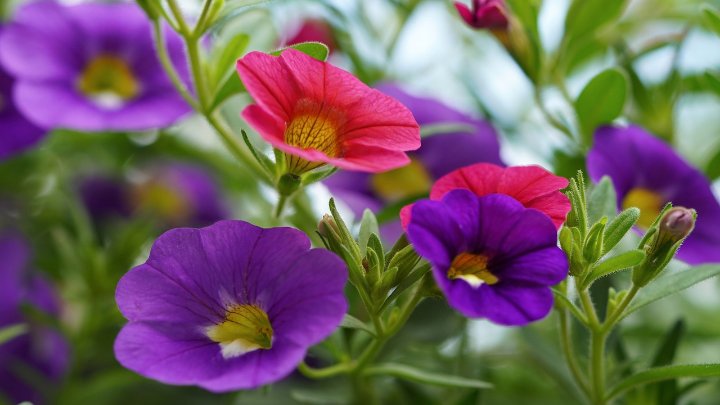
Petunias are one of the most popular annual flowers for gardens worldwide—and for good reason! Their wide array of colors and patterns are visually appealing and offer hummingbirds an inviting nectar source. Certain varieties, especially those with tubular flowers, are particularly attractive to these birds.
They bloom profusely from spring to frost, creating a non-stop show of color throughout the growing season. Petunias grow well in various conditions, from hanging baskets to full garden beds, and they prefer well-drained soil. Their adaptability, coupled with their ability to attract hummingbirds, makes petunias a favored choice for many gardeners.
Salvia
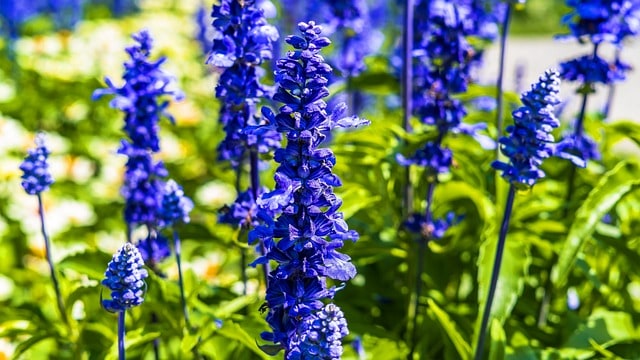
Salvia, or sage, is one of the best-known hummingbird magnets. With its upright flower spikes that come in an array of colors from reds to blues, salvia provides a rich nectar source that these birds cannot resist. Various species of salvia are available, many of which bloom from spring until frost.
This plant thrives in full sun and well-drained, nutrient-rich soil. Salvia is also drought-tolerant once established, making it a low-maintenance option. Its ability to attract hummingbirds while also being a favorite among bees and butterflies makes salvia a valuable addition to any wildlife-friendly garden.
Zinnia
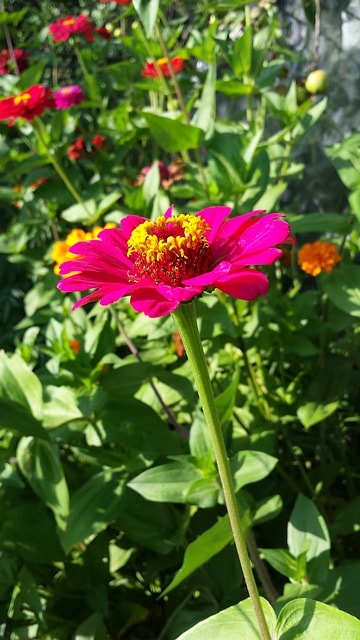
Zinnias are a riot of color and a favorite among hummingbirds due to their brightly colored, open flower heads. Available in many colors and sizes, zinnias not only attract hummingbirds but also butterflies and bees, fostering a vibrant ecosystem in your garden.
Zinnias thrive in full sun, growing best in well-drained soil with regular watering. They are known for their prolific blooms throughout the summer months, extending their attractiveness well into the fall. Additionally, zinnias are relatively easy to grow from seed, making them an accessible choice for both novice and experienced gardeners alike.


